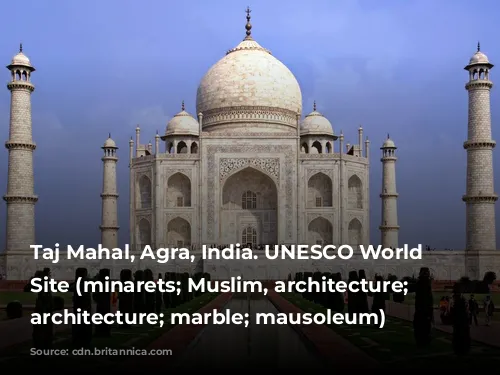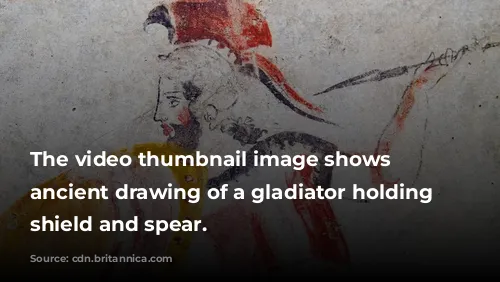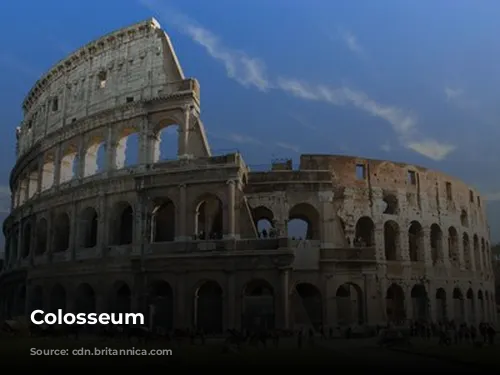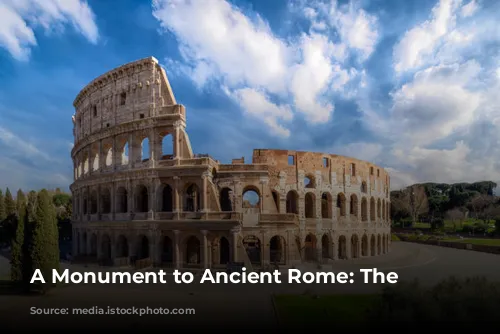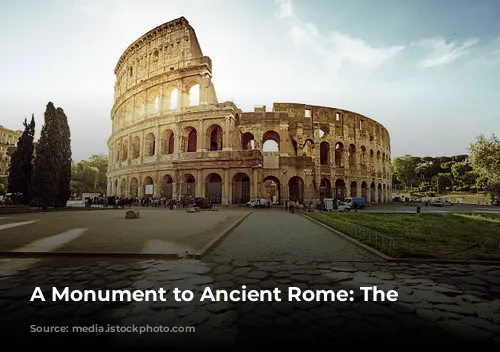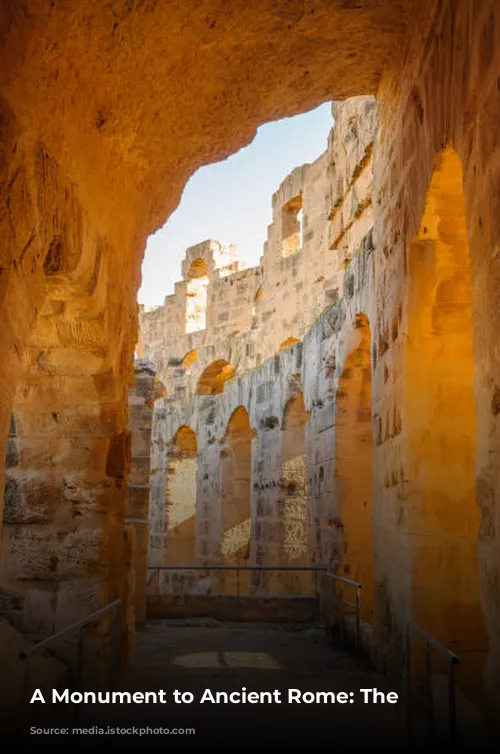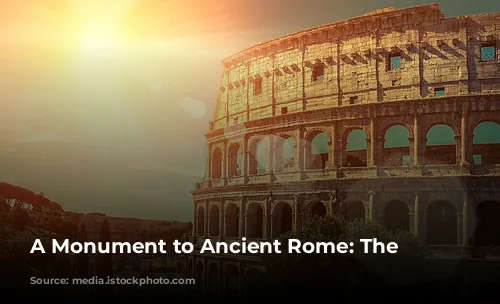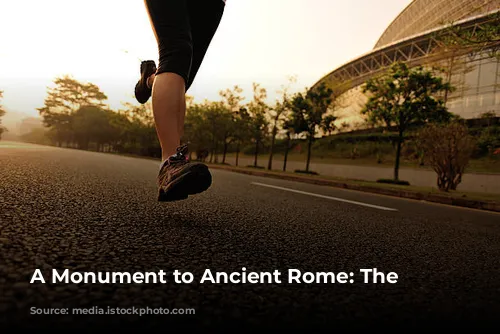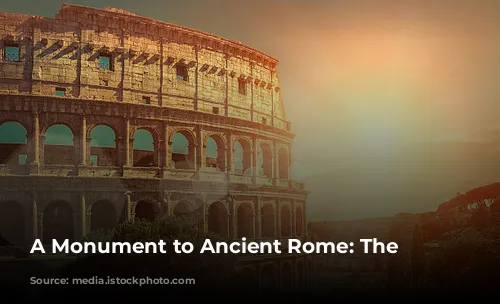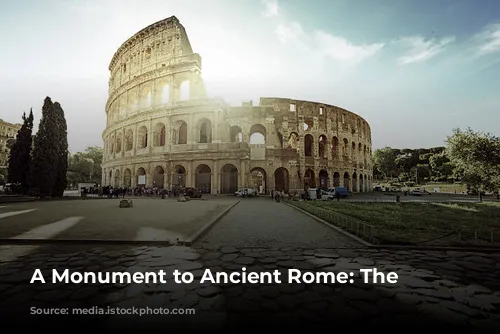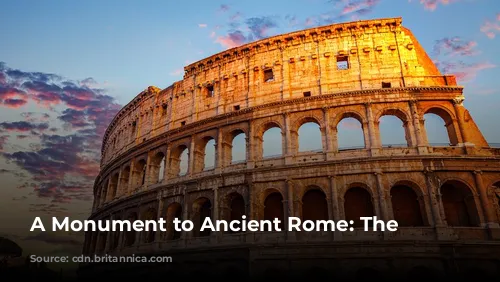The Colosseum stands as a testament to the architectural brilliance and engineering prowess of ancient Rome, a timeless symbol of a powerful empire. Today, it’s more than just a relic; it’s a major player in the Italian tourism industry, generating significant revenue for the government. In 2018 alone, the Colosseum, along with the Roman Forum and Palatine Hill, attracted a massive number of visitors, contributing over $63.3 million (€53.8 million) to the Italian economy – the highest revenue from any tourist attraction in the entire country.
The Colosseum’s history is a journey through time, revealing the rise and fall of an empire and the enduring power of its legacy. After the fall of the Western Roman Empire, the Colosseum fell into a state of serious disrepair. For centuries, it was used as a fortress by powerful families and later as a source of building materials. Imagine the grandeur of this majestic structure being stripped bare, its once magnificent marble seats and decorative elements slowly disappearing. Thankfully, after over a thousand years of neglect, state-funded restoration efforts began in the 1990s, breathing new life into this ancient wonder.
A Symbol of Roman Might
The Colosseum’s construction reflects a crucial moment in Roman history, a time of rebuilding and revitalization after the turbulent year known as the “Year of the Four Emperors” in 69 CE. Emperor Vespasian, aiming to restore Rome’s splendor, envisioned the Colosseum as a center of entertainment, a place where gladiatorial combats, animal hunts, and even mock naval battles would captivate the masses.
The construction of this grand amphitheater began under Emperor Vespasian between 70 and 72 CE, and its dedication ceremony, led by his son and successor, Titus, in 80 CE, was a spectacle lasting 100 days! The Colosseum’s fourth story, a testament to Emperor Domitian’s architectural ambition, was added in 82 CE. It’s worth noting that the funding for this magnificent structure came from the spoils of war – the plunder from Titus’s conquest of Jerusalem in 70 CE. Sadly, Jewish slaves from Judea were forced to contribute their labor to build this symbol of Roman power.
A Structure of Strength and Innovation
The Colosseum, also known as the Flavian Amphitheatre, is a magnificent elliptical structure crafted from stone, concrete, and tuff, towering four stories high. This architectural marvel measures an impressive 620 by 513 feet (189 by 156 meters) and had the capacity to hold a staggering 50,000 spectators – a true testament to Roman engineering. The Colosseum, with its iconic design, was made famous for its gladiatorial combats, the thrill of which captivated the Roman populace.
The Colosseum stands in a location chosen as much for its symbolism as its practicality. Situated just east of the Palatine Hill, it occupies the site of Nero’s Golden House, a grand palace that represented the excesses of a tyrannical ruler. The artificial lake, the centerpiece of Nero’s palace complex, was drained to make way for the Colosseum, marking a shift from private extravagance to public entertainment. Vespasian, a ruler who rose from humble beginnings, sought to replace Nero’s lavish lake with a grand amphitheater that would bring the Roman people together.
A Stage for Spectacles and a Source of Controversy
The Colosseum’s design is as impressive as its scale. Unlike earlier amphitheaters, which relied on the natural support of hillsides, the Colosseum is a freestanding structure, demonstrating remarkable feats of engineering. The Colosseum’s unique construction incorporates a complex system of barrel and groin vaults, which contribute to its strength and stability. The Colosseum’s three lower stories boast arcades framed by engaged columns in the Doric, Ionic, and Corinthian orders, a design that influenced Renaissance architecture. The Colosseum’s facade is constructed from travertine, a durable stone, while volcanic tufa forms its secondary walls, and concrete makes up its inner bowl and arcade vaults.
The Colosseum provided its spectators with an exceptional viewing experience. The massive retractable velarium, a sunshade, was a marvel of Roman ingenuity. A system of supporting masts extended from the Colosseum’s attic story, and hundreds of Roman sailors were responsible for manipulating the rigging that extended and retracted the velarium, providing shade for the thousands of spectators. The Colosseum hosted a wide range of spectacles, from gladiator fights to animal hunts to mock naval battles, attracting huge crowds. However, while the Colosseum’s role in gladiatorial combat is undeniable, the evidence regarding its use in the martyrdom of early Christians remains uncertain.
From Grandeur to Neglect and Back Again
The Colosseum’s story is not just one of triumphs, but also of neglect and renewal. Over the centuries, the Colosseum was repurposed, used as a church, a fortress, and even a quarry. It suffered damage from lightning strikes, earthquakes, and vandalism. Its once-glorious marble seats and decorative elements disappeared, as the site was treated as a quarry for over a thousand years. Thankfully, the Colosseum’s preservation began in earnest during the 19th century, with significant contributions from Pope Pius VIII. In the 1990s, a major restoration project breathed new life into this ancient monument.
Today, the Colosseum stands as one of Rome’s most popular tourist attractions, welcoming close to seven million visitors each year. Changing exhibitions showcasing the culture of ancient Rome are regularly held, adding to the Colosseum’s allure and providing a glimpse into the rich history of this iconic structure. The Colosseum continues to captivate the world, a testament to the enduring power of the Roman Empire and a reminder of the strength and resilience of human ingenuity.
